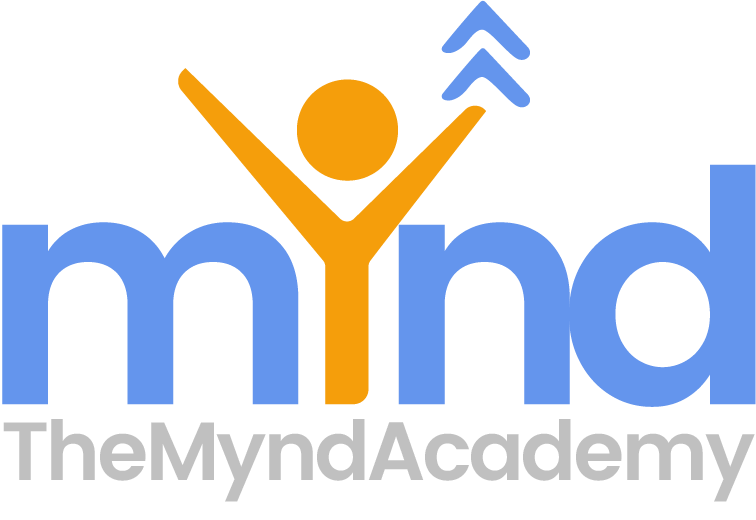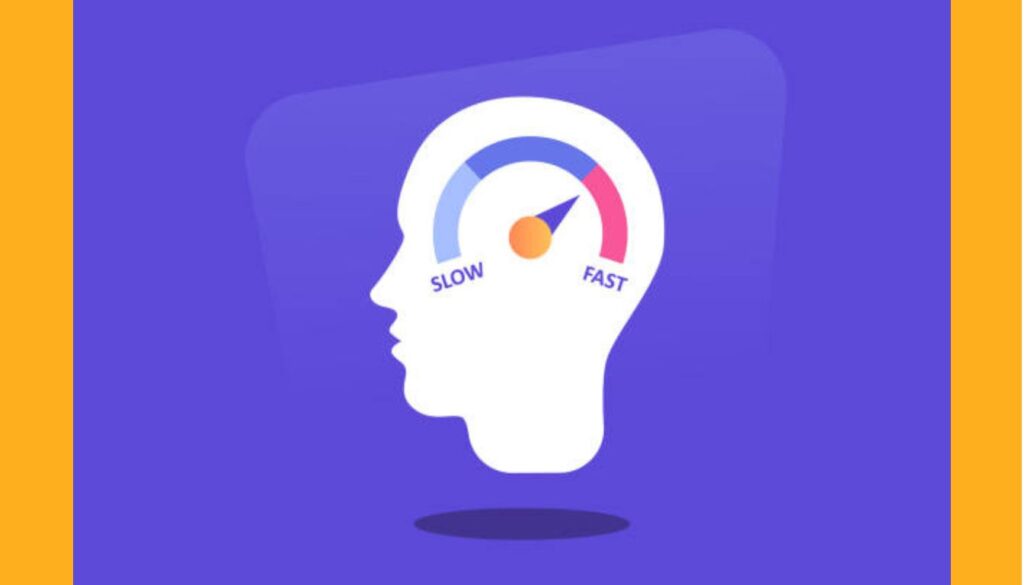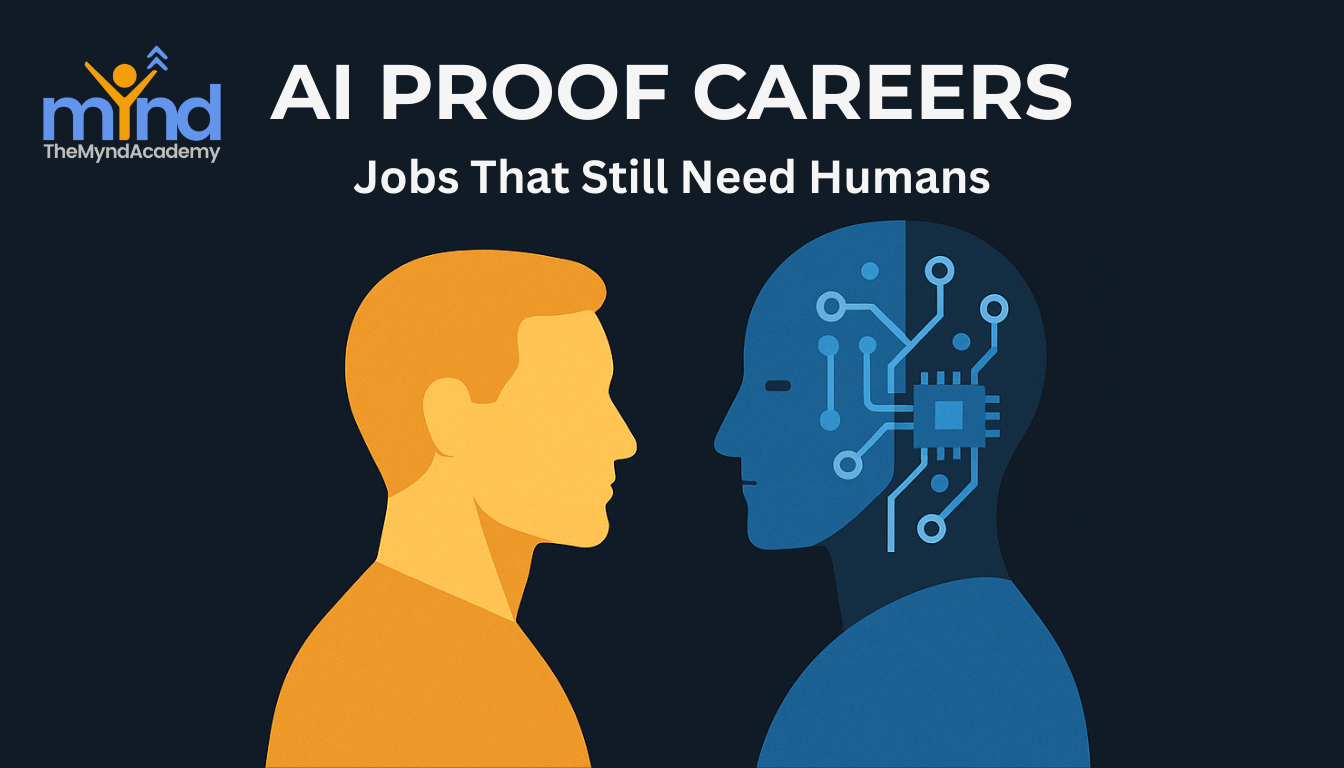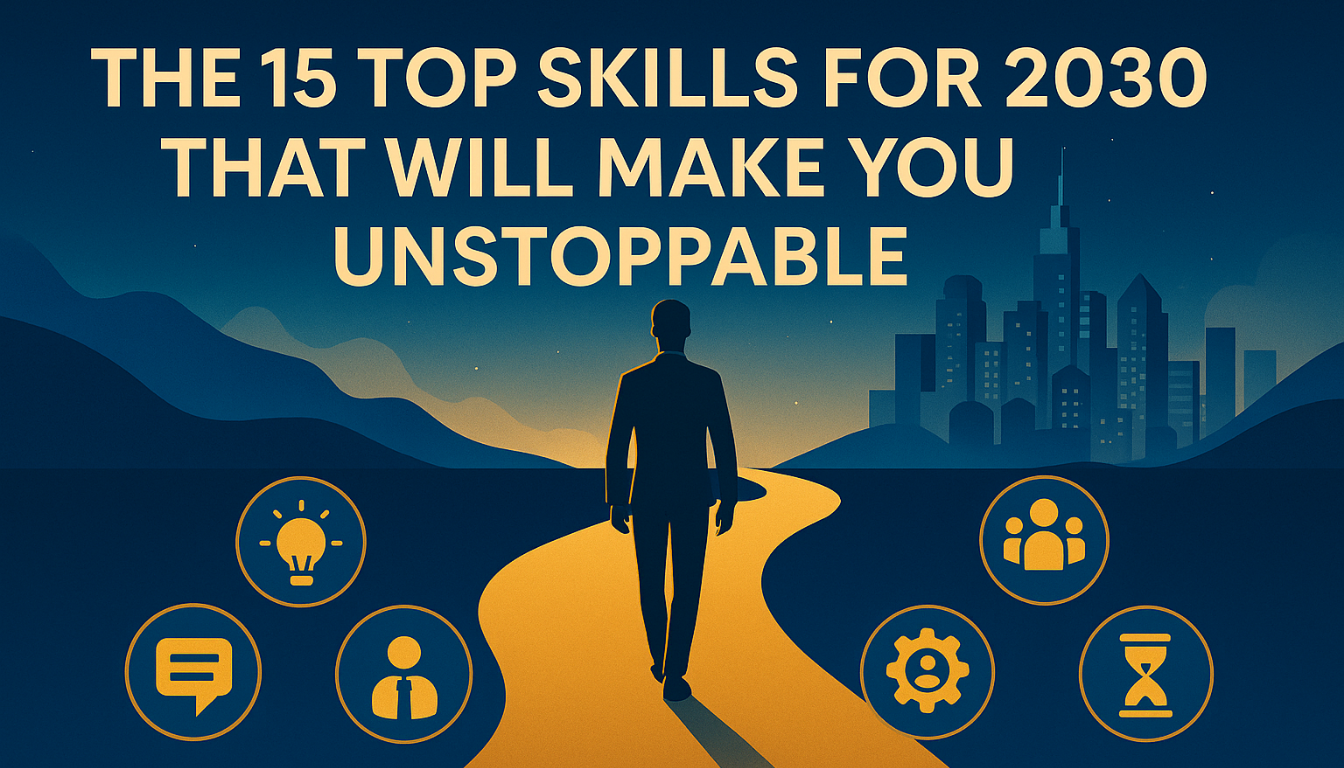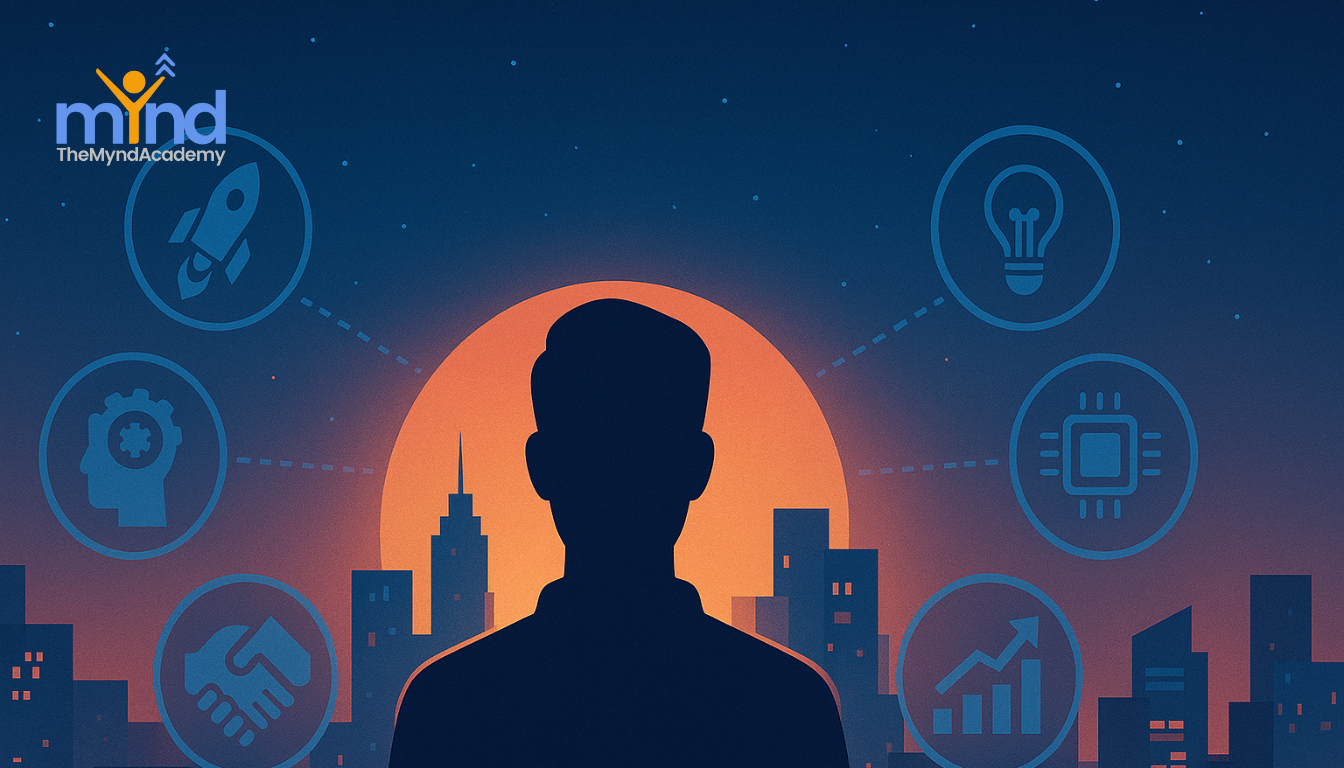Learning agility is what separates those who lead from those who get left behind. In a world where AI can absorb knowledge faster than we ever could, it’s not about what you know anymore—it’s about how quickly you can learn, adapt, and apply. That’s what makes learning agility one of the most valuable skills of our time.
Industries are shifting. Job roles are being rewritten. Tools change every few months. And in the middle of all this, the people who grow are the ones who know how to move with change—not resist it. Learning agility isn’t just about picking up new skills. It’s about letting go of outdated thinking, staying curious, and staying useful.
The good news? It’s not some rare talent. It’s a mindset anyone can build—with the right approach.
In this blog, we’ll break down what learning agility really means (beyond the buzzword), why it’s the key to future-proofing your career, and how you can start strengthening it today. You’ll get real examples, habit formation techniques, and .practical strategies to help you make smarter decisions, faster—especially when nothing is certain.
What Is Learning Agility (Really)?
Learning agility is is the ability to learn fast, apply that learning in unfamiliar situations, and shift direction when required. The best professionals today are not those who stick to what they know. They are the ones who know how to adjust quickly when what they know stops working.
In simple terms, learning agility means you:
- Let go of outdated habits
- Ask the right questions
- Test, apply, and improve
- Keep learning in motion
It shows up when:
- The software changes overnight and you need to deliver by next week
- A role opens up with zero clear guidelines and someone needs to step in
- A problem lands in your lap that no one else can solve because it doesn’t look like the old ones
Some people pause until they’re trained. Others start testing, asking, and thinking on their feet. That’s learning agility in motion. According to a global Korn Ferry study that analyzed 100,000+ professionals, high learning agility is the strongest predictor of promotability and long-term leadership success. It ranked higher than IQ, experience, and technical expertise. People with high learning agility were 18 times more likely to be identified as high-potential employees.
What makes them different?
- They observe patterns faster
- They challenge what they already know
- They don’t get stuck in a loop of “but this is how we always did it”
Learning agility isn’t about learning faster. It’s about thinking better, adapting sooner, and executing smarter under pressure.
Why Learning Agility Matters More Than Experience
Experience still matters, but only when it evolves. In today’s work environment, static knowledge becomes outdated faster than most professionals realize. What you mastered five years ago may no longer be relevant to how your role functions today.
According to IBM’s Institute for Business Value, the average half-life of a workplace skill is now just 2.5 years in fast-moving industries like tech, finance, and digital media. That means in less than three years, half of what you know becomes less useful, or even obsolete. In sectors like AI, cybersecurity, and marketing automation, the number is even lower.
This shift puts pressure on professionals to rethink what makes them valuable. It’s no longer your years of experience that define your competetive advantage but how quickly you can adapt, how well you can retool your thinking, and how often you can step into the unknown without slowing down.
Unlike experience, learning agility doesn’t rely on past repetition; it’s powered by present flexibility. It’s what allows you to:
- Learn a new system in days, not months
- Pivot into a different role without formal training
- Handle unpredictable challenges without waiting for instructions
- Thrive in teams where roles, goals, and workflows are constantly shifting
This is also why top global employers now prioritize learning agility when hiring and promoting. According to a 2022 report by Deloitte, 73% of high-growth companies identify learning agility as a key performance trait. They’ve learned that technical knowledge gets outdated—but the ability to evolve never loses value.
In leadership, the difference is even more visible. A study published in Personnel Psychology found that managers with high learning agility outperform their peers during business transitions, mergers, and restructuring. They don’t panic when the map changes. They shift gears, assess, and move forward while others pause.
When the market changes, experience may tell you what used to work. Learning agility helps you figure out what to do now.
Here’s Exactly why Learning Agility Outperforms Experience:
In short, experience describes where you’ve been.
Learning agility determines how far you can go.
- Tools change faster than training manuals
- Markets shift while you’re still writing the strategy
- Clients expect results, not background
- What worked last year might hold you back this year
The Core Elements of Learning Agility
Understanding learning agility requires more than just a list of traits. Most competitor blogs mention the same five components, but they rarely explain how these traits actually show up in daily decisions, or how they influence long-term growth.
Here are the five core dimensions of learning agility—not as abstract ideas, but as real skills that shape how you perform, grow, and lead.
1. Mental Agility
This is your ability to deal with complexity. It shows up when things don’t make sense—when a problem doesn’t fit a familiar template, or when the information feels contradictory.
People with high mental agility don’t default to one model of thinking. They ask better questions. They shift perspectives. They analyze from multiple angles before jumping to conclusions.
Research from Stanford’s Decision Education Lab found that people trained in adaptive thinking made 38% more accurate decisions in novel scenarios than those using static frameworks. Therefore, learning agility demands mental movement, not mental repetition.
2. People Agility
Learning agility isn’t a solo skill. It develops faster when you’re exposed to people who think, behave, and communicate differently than you. People agility is the ability to navigate that diversity with curiosity instead of conflict.
This means:
- Reading signals in conversation
- Adapting how you present ideas based on the listener
- Learning from others without needing to agree with them
People agility also links directly to leadership success. A longitudinal study by CCL (Center for Creative Leadership) found that managers with high people agility received higher performance ratings from both peers and direct reports. They’re not just good communicators—they’re adaptive ones.
3. Change Agility
Change agility is your relationship with uncertainty. It is the muscle that decides how you respond when unexpected things happen, and things dont go as you had planned.
Professionals with strong change agility:
- Stay resourceful when things go off track
- Ask what the situation needs, not what they were trained to do
- Take initiative, even when they feel unprepared
In a survey by PwC, 74% of CEOs said they were concerned about the speed of technological change, yet most had no system to evaluate their team’s change agility. This shows a major gap—and also an opportunity for those who actively build this skill.
4. Results Agility
Learning agility does not stop at thinking. It becomes valuable when it turns into action. Results agility is the ability to stay focused, take action in real time, and deliver—even when conditions are unstable.
This looks like:
- Making good decisions without full data
- Staying calm under deadline pressure
- Prioritizing action over perfection
A study by SHL found that professionals with high results agility were 42% more likely to succeed in ambiguous roles—jobs without fixed expectations or predictable workflows.
5. Self-Awareness
This is the foundation of all learning agility. If you don’t know how you think, where you get stuck, or what triggers resistance, you’ll struggle to grow.
Self-awareness in agile learners includes:
- Recognizing when you’re reacting, not responding
- Understanding what feedback makes you defensive
- Tracking patterns in how you learn, adapt, and recover
According to a study by Dr. Tasha Eurich, only 10–15% of people are actually self-aware, even though 95% think they are. That gap blocks growth. True learning agility starts when you can observe your behavior without needing to justify it.
How to Build Learning Agility: The MYND Method
Most blogs talk about learning agility like it’s a mindset you either “have” or don’t. They give you tips like “stay open-minded” or “be flexible”—but they don’t tell you how to develop those skills in real life.
Learning agility is not abstract or accidental. It’s a measurable capability developed through deliberate, repeated exposure to unfamiliar situations. Like any critical skill, it improves when it’s practiced with structure, purpose, and reflection.
Here’s a step-by-step breakdown of how to build real, lasting learning agility without needing to change your entire life.
1. Seek Out Constructive Discomfort
The human brain grows fastest when it encounters the unfamiliar—especially when that unfamiliarity is paired with purpose. Learning agility depends on your ability to stay grounded in uncertain or complex conditions.One way to develop this is by increasing your exposure to productive discomfort.
This might include:
- Taking on tasks without a fixed process
- Working across departments where you’re not the expert
- Engaging with new technologies or systems without formal training
Research from UCL’s Institute of Cognitive Neuroscience confirms that exposure to manageable levels of uncertainty improves decision-making under pressure by enhancing the brain’s adaptive responses.
Many traditional development models emphasize repetition. Learning agility, however, grows through deliberate variation—the act of doing things differently, not just doing them more.
2. Ask Smarter Questions, Not Just More Questions
Agile thinkers don’t look for certainty; they look for leverage. This begins with asking questions that open up options rather than reinforce limitations. At The MYND Academy, we teach framing-based inquiry—how to ask questions that solve problems.
How Can You Ask Smart Questions:
- “What assumptions am I making here?”
- “What’s a simpler way to approach this?”
- “Is this still the right metric, or is the situation asking for a new one?”
A study published in Harvard Business Review found that leaders who asked expansive, exploratory questions were more likely to spot early warning signs of disruption in their industries. This ability to frame problems differently is a cornerstone of learning agility.
Training this skill is about discipline. It requires slowing down long enough to challenge your automatic thinking and move beyond surface-level reactions.
3. Use the Learn–Apply–Reflect Cycle (LAR)
One of the most overlooked aspects of learning agility is the speed at which new information becomes behavior. The longer you wait to apply something, the less likely you are to use it effectively.
A reliable method for building this conversion is the Learn–Apply–Reflect cycle:
- Learn with a specific use-case in mind
- Apply within 24 to 48 hours, even if it’s imperfect
- Reflect on what worked, what didn’t, and what should change
In 2020, researchers from the University of Edinburgh found that learners who applied material within two days of exposure retained 40% more and demonstrated greater cross-context transfer than those who simply studied passively.
This cycle is not about speed for its own sake. It is about creating momentum, so that learning becomes a continuous loop, not a disconnected event.
4. Engineer a More Adaptive Environment
The people you work with shape how you think. That’s not a motivational quote; it’s neuroscience. Studies in social cognition have shown that exposure to diverse thinking styles enhances your ability to make complex decisions and anticipate second-order effects.
If you want to build learning agility, actively design your environment to reflect it:
- Join communities where new ideas are challenged and stress-tested
- Work alongside people from different industries or disciplines
- Prioritize collaboration over hierarchy
This kind of exposure speeds up what psychologists call “cognitive flexibility”—the mental agility to switch between strategies, adjust interpretations, and abandon failing approaches when necessary.
Most development programs focus only on the individual. But learning agility is also environmental. If the culture around you punishes failure, rewards conformity, or discourages experimentation, it will be difficult to build this skill in isolation.
5. Unlearn as Intentionally as You Learn
Learning agility depends as much on what you discard as on what you retain. Yet few professionals are trained to unlearn. This requires identifying beliefs, processes, or patterns that were once useful, but are now slowing you down.
To begin this process:
- Track habits that no longer lead to your intended results
- Ask what assumptions your current routine is built on—and whether those are still valid
- Run monthly audits on your “default settings”—tools, communication styles, problem-solving strategies
Organizational psychologist Adam Grant explains that unlearning happens faster when it is connected to identity. If you see yourself as “the expert,” you will resist letting go of outdated methods. If you see yourself as a learner, your agility improves.
Very few professional training systems include unlearning as a formal step. But at The MYND Academy, we consider it foundational. Letting go of the old is what creates room for the new.
Building Learning Agility Is a Strategic Process
Every one of these actions trains a different layer of learning agility:
- Discomfort builds your tolerance for uncertainty
- Questions build your cognitive depth
- Application builds your execution speed
- Reflection builds your pattern recognition
- Unlearning builds your capacity for real change
While most competitors emphasize static skills or personality traits, we treat learning agility as a system—a skillset that is measurable, scalable, and central to long-term professional performance.
How High Performers Use Learning Agility to Advance Faster
Learning agility becomes most visible when professionals are required to operate outside their known territory. The following Practical examples highlight how this skill enables individuals to solve problems faster, shift roles seamlessly, and take on challenges that others avoid.
These aren’t exceptional cases. They are representative of how learning agility shows up in high-performance environments every day.
1. A Mid-Career Finance Manager Who Transitioned into Product Strategy
After over a decade in corporate finance, a senior manager at a consumer goods company was invited to join a product innovation team. She had no formal background in design thinking, no experience with agile workflows, and limited technical knowledge.
What she had was high learning agility.
She quickly immersed herself in user research methods, built relationships across engineering and marketing, and applied her financial lens to identify profitable gaps in feature development. Within 18 months, she co-led the launch of a new product line that exceeded revenue projections by 22%.
Her success didn’t come from experience in the field. It came from her ability to learn fast, adapt to new thinking models, and execute with clarity—exactly what learning agility enables.
2. A Software Engineer Who Stepped into a People Leadership Role
A high-performing developer in a tech startup was offered a team lead role during a period of rapid growth. He had no prior leadership experience and was initially hesitant.
Instead of declining, he treated the opportunity as a learning sprint.
He began shadowing senior leaders, initiated weekly feedback sessions with his team, and applied conflict resolution frameworks he learned through short-form courses. By his third month, employee satisfaction scores on his team had increased by 31%, and delivery times improved across two key sprints.
Learning agility helped him build leadership skills in real time, without needing years of preparation.
3. A Marketing Consultant Who Pivoted to Sustainability and Policy
After five years in brand consulting, a strategist chose to move into the environmental sector. She had no academic background in policy or climate science, but she had a structured approach to learning agility.
She:
- Enrolled in two short certification programs
- Interviewed subject matter experts weekly for 90 days
- Applied for a low-visibility internal policy role to gain traction
Twelve months later, she was presenting to international sustainability panels and advising global clients on ESG strategy.
Her agility didn’t lie in what she knew; it lay in how she built knowledge, applied it in live scenarios, and continued to refine her approach through feedback and reflection.
4. A Young Professional Who Outpaced Experienced Peers
A 24-year-old operations associate at a logistics company started with minimal experience but consistently volunteered for complex, undefined projects. Within two years, he was promoted twice, outpacing others with more traditional qualifications.
His learning agility was visible through how he:
- Asked operational questions others avoided
- Applied real-time data to propose better routing systems
- Built cross-functional understanding between warehouse, transport, and customer service teams
When asked what made him stand out, his manager cited “his ability to make sense of new situations faster than anyone else.”
That is the value of learning agility in practical life.
Learning Agility Creates Opportunity Others Miss
In all these cases, the individuals succeeded not because of credentials or comfort; they succeeded because they were equipped to move forward when the context changed.
They were:
- Coachable
- Action-oriented
- Focused on momentum over mastery
- Willing to test, refine, and improve in motion
These are the professionals who grow fast, solve better, and lead early. They represent what a future-ready workforce actually looks like.
The Life Benefits of Learning Agility You Didn’t Expect
Learning agility is often framed as a professional advantage, but it has muchbroader impacts. The same skills that help you lead a team or pull through industry shifts also help you adapt in your personal life, relationships, and health.
In reality, learning agility is a whole-life capability. It shapes how you respond to complexity, change, and uncertainty—regardless of the setting.
1: In Relationships
Learning agility strengthens emotional flexibility. It helps you:
- Recognize when your default reactions no longer support meaningful connection
- Adjust your communication style based on the needs, values, or triggers of others
- Handle disagreement without shutting down or escalating
- Learn from repeated patterns, and shift your approach accordingly
Research from the Gottman Institute shows that adaptability in communication is one of the strongest predictors of long-term relationship success. That’s learning agility in action: staying open to different perspectives, not rigid in your habits.
2: In Health and Wellbeing
Your ability to improve your health doesn’t just depend on willpower. It depends on how well you adapt your routines when your body, goals, or life context change.
Learning agility in health looks like:
- Letting go of routines that no longer work for your energy levels or schedule
- Testing and refining habits based on data—rather than sticking to trends
- Responding to setbacks with adjustment, not guilt
- Staying open to science, feedback, and your own changing needs
Whether it’s diet, exercise, or mental health, the people who grow in this space are rarely the ones who do everything perfectly. They’re the ones who respond intelligently to change.
In Decision-Making and Life Transitions
Big life moments—career shifts, relocations, breakups, new roles, or unexpected challenges require more than clarity. They require adaptability.
People with learning agility:
- Make decisions with limited information
- Adjust their plans when conditions change
- Move forward with intention, even when outcomes are uncertain
- Learn from wrong turns, instead of letting them define the journey
A 2023 longitudinal study published in Behavioral Science & Policy found that individuals with high cognitive and emotional adaptability reported greater life satisfaction and lower decision regret, especially during periods of transition.
This reinforces the point: learning agility doesn’t just help you succeed. It helps you stay balanced, thoughtful, and capable under pressure in every part of your life.
